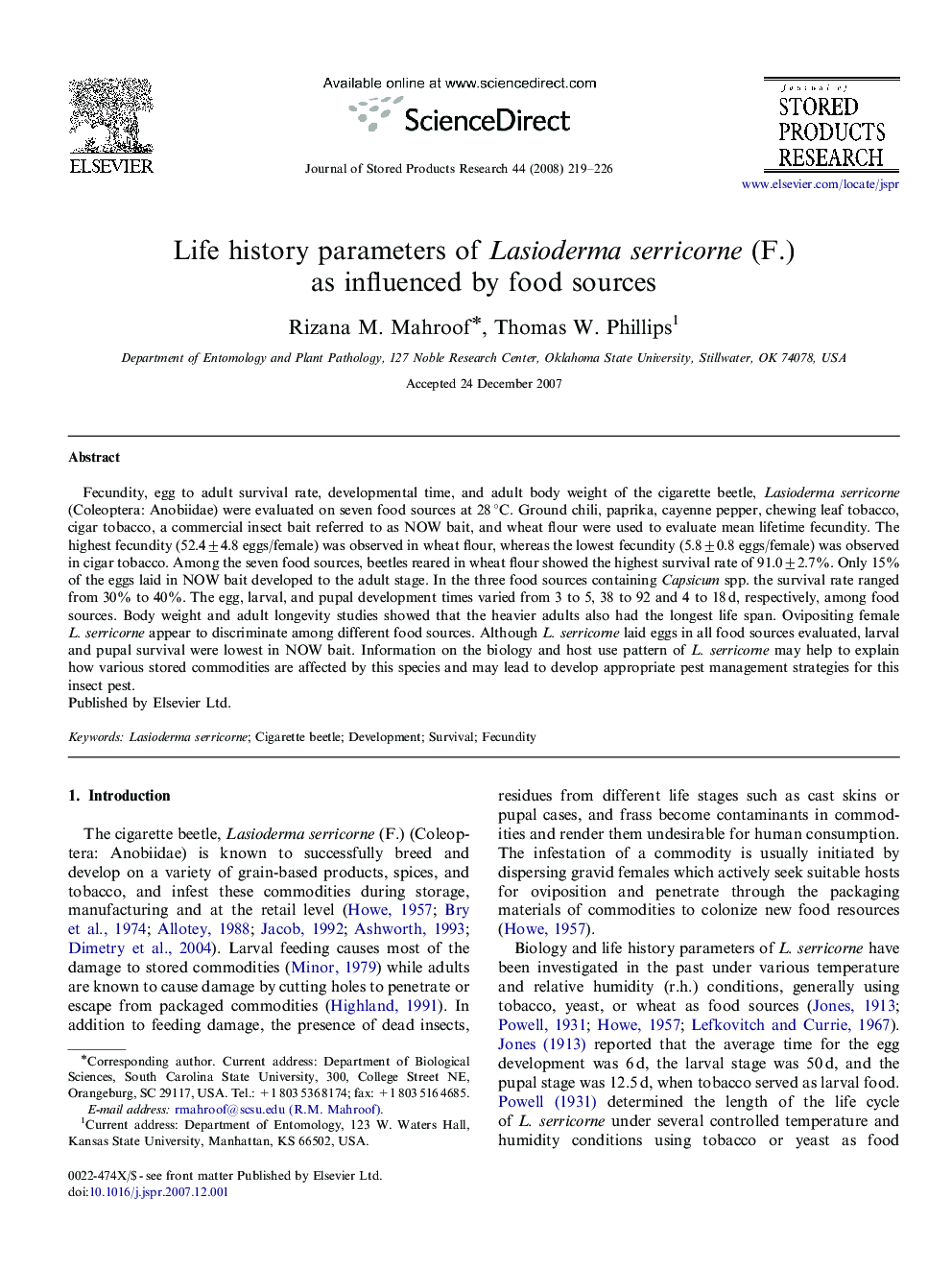| Article ID | Journal | Published Year | Pages | File Type |
|---|---|---|---|---|
| 4517473 | Journal of Stored Products Research | 2008 | 8 Pages |
Fecundity, egg to adult survival rate, developmental time, and adult body weight of the cigarette beetle, Lasioderma serricorne (Coleoptera: Anobiidae) were evaluated on seven food sources at 28 °C. Ground chili, paprika, cayenne pepper, chewing leaf tobacco, cigar tobacco, a commercial insect bait referred to as NOW bait, and wheat flour were used to evaluate mean lifetime fecundity. The highest fecundity (52.4±4.8 eggs/female) was observed in wheat flour, whereas the lowest fecundity (5.8±0.8 eggs/female) was observed in cigar tobacco. Among the seven food sources, beetles reared in wheat flour showed the highest survival rate of 91.0±2.7%. Only 15% of the eggs laid in NOW bait developed to the adult stage. In the three food sources containing Capsicum spp. the survival rate ranged from 30% to 40%. The egg, larval, and pupal development times varied from 3 to 5, 38 to 92 and 4 to 18 d, respectively, among food sources. Body weight and adult longevity studies showed that the heavier adults also had the longest life span. Ovipositing female L. serricorne appear to discriminate among different food sources. Although L. serricorne laid eggs in all food sources evaluated, larval and pupal survival were lowest in NOW bait. Information on the biology and host use pattern of L. serricorne may help to explain how various stored commodities are affected by this species and may lead to develop appropriate pest management strategies for this insect pest.
